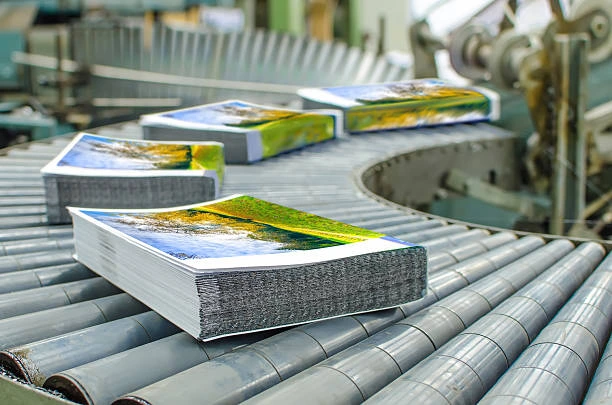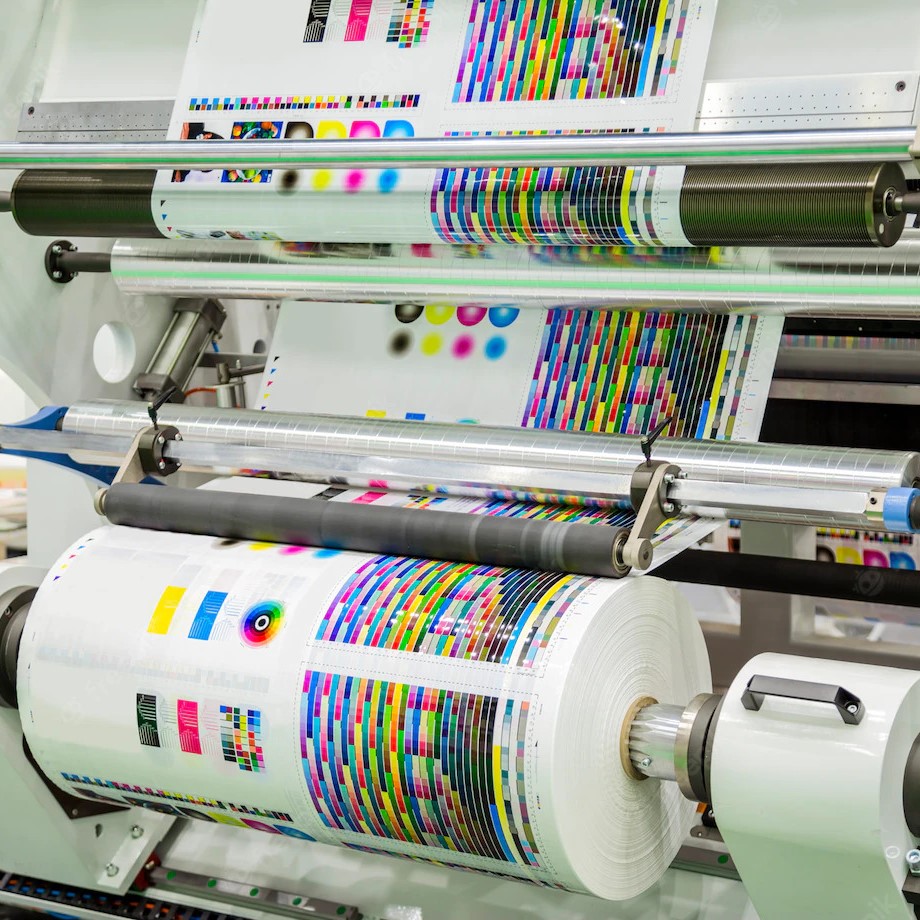Industry Trends Shaping the Future of litho printing
Wiki Article
The Essential Guide to Recognizing Litho Printing and Its Applications
Litho printing stands as a substantial technique in the printing market, rooted in the concepts of oil and water repulsion. This strategy not just supplies top notch photos but likewise caters to numerous business requirements. Its applications vary from advertising materials to packaging, showcasing its versatility. As the market adapts to brand-new technologies, the development of litho printing elevates questions regarding its future and relevance in a digital landscape. What exists ahead for this sustaining method?
What Is Litho Printing?
Litho printing, a widely utilized printing technique, counts on the principle of oil and water repulsion. This approach uses a level printing surface area, commonly a metal plate, which is treated to ensure that the photo areas are responsive to oil-based inks while the non-image locations repel them. The procedure starts with the creation of a photo on home plate, frequently with drawing or photographic ways. Once the photo is prepared, home plate is wetted with water, complied with by the application of ink. The ink sticks just to the photo locations, enabling for accurate recreation of graphics and message. Litho printing is favored for its ability to produce high-quality prints with fine information and dynamic colors. It is frequently used in business applications, including papers, publications, and packaging, showcasing its convenience and effectiveness in meeting the needs of modern printing.The Background of Lithography
Although lithography is a modern printing staple, its origins map back to the late 18th century when German playwright Alois Senefelder created the strategy in 1796. Originally created as an approach for reproducing texts and photos, lithography made use of a level stone surface to produce prints through a chemical process. Senefelder's technology enabled better versatility and artistic expression compared to previous printing methods.By the 19th century, lithography acquired widespread acceptance, coming to be a preferred choice amongst musicians and authors. It enabled the mass production of pictures, maps, and posters, significantly influencing the printing industry. The technique further developed with the intro of lithographic presses, improving effectiveness and quality.As the commercial transformation proceeded, lithography adapted to meet the needs of industrial printing, leading the way for modern applications. Today, it remains an essential technique in different markets, including posting, product packaging, and fine art reproduction.Just How Litho Printing Functions
A vital function of litho printing is its dependence on the concept of oil and water repulsion - litho printing. In this process, photos are transferred from a level surface area, normally a steel or polymer plate, to paper. The plate is treated to ensure that the areas intended for printing draw in ink, while the non-image locations repel it due to their affinity for water. The printing begins by dampening the plate with water, which complies with the non-image areas. Consequently, an oil-based ink is used, sticking just to the designated image areas.When the plate comes right into contact with the substratum, the ink is transferred, creating a print. The litho printing procedure is capable of creating high-quality photos with fine information. It is typically utilized for automation due to its effectiveness and uniformity, making it a preferred technique for business printing applicationsBenefits of Litho Printing
One noteworthy benefit of litho printing is its capacity to generate high-quality photos consistently, making it an optimal option for business jobs. This printing approach utilizes a level printing plate, ensuring even ink distribution and sharp details. Litho printing is also renowned for its shade precision, allowing vibrant and true-to-life reproductions, which is essential for branding materials.Moreover, it sustains a variety of substratums, consisting of paper, cardboard, and also specific plastics, boosting its versatility. The procedure is cost-effective for huge runs, as economic situations of scale decrease per-unit costs. On top of that, litho printing has a quick turn-around time, permitting for efficient manufacturing schedules.Its sturdiness likewise indicates that published products resist fading, ensuring that the final item preserves its aesthetic appeal gradually. In general, these advantages make litho printing a preferred choice throughout numerous industries, adding to its long-lasting appeal.
Applications of Litho Printing in Business
As companies increasingly look for trustworthy and premium printing options, litho printing becomes a crucial player in numerous applications. This strategy is specifically favored for generating marketing products such as pamphlets, leaflets, and directories, thanks to its ability to supply lively shades and sharp photos. Furthermore, litho printing is often utilized for product packaging remedies, allowing business to develop Home Page captivating labels and boxes that enhance product appeal.In the field of corporate identification, litho printing contributes in creating expert stationery, organization cards, and marketing product, which help reinforce brand recognition. Additionally, it is commonly utilized in the posting sector for printed products such as books and publications, where constant high quality is extremely important. On the whole, litho printing's versatility and performance make it a crucial device for services intending to connect properly and establish a strong market presence.Artistic Use Litho Printing
Litho printing offers as a versatile tool in the domain name of printmaking, offering artists an unique approach to reveal their creativity. This strategy permits a variety of artistic applications, from traditional prints to contemporary analyses. By discovering the subtleties of litho printing, musicians can harness its distinctive top qualities to improve their job.
Printmaking Methods Introduction
The virtuosity of printmaking encompasses a diverse variety of methods, with litho printing sticking out for its one-of-a-kind strategy to image development. This technique relies upon the concept of oil and water repulsion, allowing artists to draw directly onto a sedimentary rock or steel plate with a greasy tool. Once prepared, home plate is moistened and inked, moving the image onto paper with stress. Litho printing is celebrated for its capability to produce great information and abundant tonal variants, making it a popular selection amongst musicians. Furthermore, the process is functional, fitting both traditional techniques and modern-day adaptations. This versatility enables litho printing to bridge numerous artistic styles, enhancing the printmaking landscape with its distinctive qualities and abilities.Unique Artistic Applications
Discovering the one-of-a-kind imaginative applications of litho printing reveals its impressive flexibility in numerous innovative areas. Musicians use litho printing to create intricate designs and appearances, permitting meaningful and thorough jobs. The process facilitates the recreation of vivid shades, making it ideal for images and art prints. Lots of contemporary musicians embrace lithography for its capability to integrate typical techniques with modern-day principles, leading to innovative art work. Furthermore, litho printing is usually utilized in the production of limited edition prints, enhancing their value and allure. The responsive quality of litho prints adds a distinctive measurement, bring in enthusiasts and art fanatics alike. In general, litho printing continues to be a considerable medium for imaginative expression, connecting classic approaches with modern creative thinking.The Future of Litho Printing in a Digital World
As the printing industry advances, litho printing deals with the challenge of integrating electronic technologies to stay appropriate. Approaches concentrated on digital assimilation, along with patterns in sustainability and innovation, will shape its future - litho printing. Understanding these dynamics is crucial for market stakeholders aiming to adapt to a rapidly altering landscapeDigital Combination Strategies
A growing number of litho printing business are welcoming digital integration strategies to stay affordable advice in an increasingly digital landscape. By incorporating digital operations, these business can simplify procedures and enhance performance. This assimilation permits real-time data administration and boosted communication between divisions, minimizing turnaround times markedly. Furthermore, electronic tools allow much better customization and customization of printed materials, satisfying specific consumer needs. Companies are likewise taking on crossbreed printing services that integrate conventional litho techniques with digital modern technologies, providing flexibility in production. Leveraging data analytics helps in understanding market patterns and customer preferences, permitting services to make enlightened choices. In general, digital combination is coming to be important for litho printing firms aiming to innovate and react to developing market requirements.Sustainability and Development Patterns

Regularly Asked Inquiries
What Products Are Typically Utilized in Litho Printing?
The materials frequently used in litho printing consist of light weight aluminum plates, ink, water, and paper. Each component plays a crucial role in the printing procedure, guaranteeing top notch image reproduction and reliable transfer of ink onto the substratum.How Does Litho Printing Compare to Digital Printing?
Litho printing uses superior shade consistency and high quality for huge runs, while digital printing succeeds in short runs and modification. Each technique has unique advantages, satisfying different needs based on manufacturing range and cost-efficiency.What Is the Normal Turnaround Time for Litho Printing Projects?
The regular turn-around time for litho printing jobs varies, normally ranging from a few days to several weeks. Elements affecting this timeframe consist of task complexity, quantity, and required finishing procedures, affecting total production schedules.Can Litho Printing Accommodate Custom-made Sizes and Formats?
Litho printing can without a doubt accommodate custom dimensions and styles, permitting for adaptability in design. This adaptability enables customers to achieve unique print end results customized to their certain requirements, enhancing the total performance of their tasks.What Are the Environmental Effects of Litho Printing?
The ecological effects of litho printing consist of resource usage, chemical usage, and waste generation. Nonetheless, developments in lasting methods and environmentally friendly products are progressively decreasing these adverse results, advertising an extra environmentally accountable strategy to printing.Report this wiki page